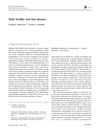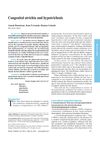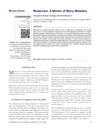Child with De Novo t(1;6)(p22.1;p22.1) translocation and features of ectodermal dysplasia with hypodontia and developmental delay
February 2003
in “
American Journal of Medical Genetics Part A
”
TLDR A chromosomal change may cause ectodermal dysplasia and developmental issues in a child.
The document reported on a 6.5-year-old girl with a balanced translocation between chromosomes 1 and 6, presenting features of ectodermal dysplasia, including hypodontia, developmental delay, and other physical anomalies such as microcephaly, sparse hair, and poor nail growth. Despite normal thyroid and mineral levels, she exhibited symptoms like hyperacusis and decreased sweating. Her family history included learning problems, but her parents had normal karyotypes. The study suggested that the translocation might have caused a submicroscopic loss or disruption of genes related to ectodermal dysplasia, marking the first reported case of this condition associated with the specific chromosomal rearrangement.




